A Note from Music Director James Conlon
Winston Churchill’s famous 1939 remark describing Russia might excellently serve as a description for Puccini's Turandot: "It is a riddle, wrapped in a mystery, inside an enigma.”
There is one overwhelming reason, in my opinion, for performing this opera: the magnificent music of Italy's last great operatic composer, created at the height of his maturity and technical mastery.
The plot's central dramatic moment is the life and death confrontation between the Princess Turandot and the Unknown Prince. Her three riddles—enigmas in the classical tradition of Ancient Greece—must be correctly answered for the prince to escape execution, and to win the icy, remote princess's heart (and eventually share her throne).
The premiere of Puccini's work, unfinished at his death, was barely 13 years in the past when Churchill made his famous commentary. It could very well serve as a guide through not so much the plot of Turandot, but to the very nature of Puccini's composition. The incomplete work poses more questions than answers as to what it really is.
One of those vexing questions, never to be fully resolved, is a very basic one: how to pronounce the title (with or without the final T). Historically, the direct source for the story is Carlo Gozzi’s 18th-century theater piece entitled Turandotte. The etymology goes back to the ancient Persian Turan (a region in the Persian empire) and dokht (the root of both the German “Tochter” and English “daughter). For vocal reasons—the difficulty of singing a final T on very high notes—the practice has tended in the direction of omitting the T.
Taking the large view of Puccini's long artistic development, we see it as yet another of his creative attempts to challenge both his own powers as well as the power of operatic theater. That it differs so much from earlier works reveals an apparent contradiction: but retrospectively, also the consequence of the composer’s lifelong creative process constant growth. The opera also reflects a stylistic predilection of the time: an aesthetic and compositional fascination with “exoticism,” which had deep roots in 19th-century European arts. By 1920, Puccini, an internationalist in his tastes, had absorbed the music of Debussy, Ravel, Stravinsky (especially) and, although it was not particularly to his liking, even Schönberg. Turandot opens the way above all to new possibilities for harmonic invention. If it feels reductive, at the distance of a century, it must be understood that it is the China of fairy tales, seen and heard through European eyes and ears.
Puccini did not live to complete the opera, which left two major problems to solve: primarily, how and by whom would it be completed for performance (the answer would be the enlistment of a younger composer, Franco Alfano) and secondarily, even more troubling, how to deal with a work of which an important part of the composer's process was never to materialize. After completing his previous operas, he would habitually begin a long, laborious process of editing, criticizing and revising, agonizing over both forest and trees.
As a not fully realized final product, Turandot remains imperfect in many respects. It is one of several indisputably great compositions that were never completed. In some cases, we don’t actually know why the composer did not finish them. Works in this category include Mozart's C Minor Mass and Schubert's Symphony No. 8 (the “Unfinished Symphony”). In other instances, as in Puccini's case, the premature emptying of life’s hourglass precluded their competition by the composer. Examples of these include the Mozart Requiem, Mussorgsky's Khovanshchina, Berg's Lulu, Zemlinsky's King Kandaulus, Schönberg's Moses and Aron and Mahler's Tenth Symphony.
The mystery, hearkening back to the trio of Churchill's adjectives, is to know what Puccini would have done had he lived, not just with the ending, but with the totality of the work after he had put it through his customary editing process.
Puccini left his comfort zone, the very human stories of, as he himself described it, "the tragedy of little souls." He had created his most perfect works coming out of the earlier verismo influence, portraying real life and real, usually non-heroic people, His "middle-period masterpieces" La Bohème, Tosca and Madama Butterfly, to perhaps (mis)-appropriate the term from Verdian operas, were followed by his continuing and constant quest of renewal in form and style, The Girl of the Golden West, La Rondine (a quasi-operetta,) Il Trittico (The Triptych, three distinct operas in one evening) and finally Turandot. The last is an opera vastly different from all of its predecessors in scope, intent, substance and form, an enormous experiment, which the composer did not live to complete, revise, nor see the results.
Puccini gave the chorus in Turandot an outsized role in the opera. The obvious model for this was Modest Mussorgsky's Boris Godunov, that absolute masterpiece of Russian opera. The 19th-century composer said that he considered the true protagonist of his opera to be the Russian people, the populace, and he proceeded to realize that vision.
I have never found any documentation that Puccini was influenced by Mussorgsky but, given his infinite curiosity about what was going on in the musical world throughout Europe, it seems unlikely that he didn't. I view Turandot's chorus in a similar vein as Boris Godunov's. We see a highly emotional, illiterate, fearful crowd—sometimes compassionate, sometimes cruel—as the canvas on which the rather simple ( though not simplistic) plot is built: an icy princess's disdain and fear of romantic love is broken down by a foreign prince whose reckless obsession with her ultimately leads her to relent and return his love.
Puccini paints ancient China as if it were Mussorgsky’s medieval Russia: a complex mass of people ruled with an iron hand. The inherent cruelty and violence of society’s inequality is manifest in Turandot’s opening signature musical motive. It’s significantly similar to Scarpia’s motive in Tosca. Both are built on the similar foundation of whole tone harmony (of which Puccini was enamored, following Debussy’s lead). Both motives establish the omnipresence of a cruel ruling authority.
A Mandarin reads out the conditions for wooing Turandot, sung against a background of highly bracing bitonality (the practice of sounding two recognizable traditional harmonies together to create dissonance), applying Stravinsky as a model.
The scene is set. The core of the story is that of a foreign prince who woos a seemingly unattainable princess, the stuff of fairy tales and fables.
To continue the Russian theme, I'm reminded that in Pushkin's novel Eugene Onegin (and Tchaikovsky's subsequent operatic adaptation), the great Russian poet and writer puts words into the mouth of the idealist poet Lensky to describe the difference between him and his friend Onegin. Lensky calls himself "fire" and Onegin "ice." One could sum up Calaf the Tartar Prince and Princess Turandot in those same terms.
As in Mussorgsky, we see a large, emotional, changeable, fearful crowd. They sing with awed adoration of Princess Turandot. They pray to the moon (a metaphoric deity for the princess) and then, cruelly, to the state executioner.
This immense canvas surrounds a simple (though psychologically complex) plot: that of an icy princess who disdains men and fears romantic love, attitudes born of inherited tr, and of a foreign prince (significantly a Tartar, descendent of the perpetrator of the ancient crime against Turandot’s ancestor), whose own reckless obsession leads him to ultimately conquer her resistance. The unknown prince’s name, like that of Wagner’s Lohengrin, is only revealed at the end of the opera. It is Calaf.
In his constant search for new forms, Puccini never stopped experimenting and expanding. Turandot was the largest test trial (no pun on the plot) he had ever attempted. It is a fairy tale largely drawn, as mentioned above, from the 18th-century Venetian playwright Carlo Gozzi, which itself drew from a variety of sources, largely (but not exclusively) Persian via France and Prussia (including Schiller and Goethe) but was not Chinese. Gozzi's comedy—note carefully, a comedy! —is an important strain of the commedia dell'arte tradition, combined with a fairy-tale prince and princess for popular consumption.
The goals are remarkably similar to Mozart's Singspiel The Magic Flute, a "rescue" opera with nobles and common folk who walk in and out of a dramatic presentation, provoking the audience's laughter but making it think along the way. The three ministers of Puccini’s Turandot (to whom the librettists gave the names Ping, Pang and Pong, a somewhat regrettable choice in hindsight) are absolutely and purposefully descended from the commedia dell'arte “masks,” the comic popular characters who survived from the original Carlo Gozzi play. They provide a sharply contrasting musical style, Shakespearean comic relief, ironic and cynical commentary, and—occasionally—sympathy.
Turandot's "monumental" style, unique in Puccini's output, looks both backward—to Verdi’s Aida and the French grand opéra and to the early 19th-century opera of "number" operas, which presents a series of set solo and choral pieces—and forward to the stylization and neoclassicism of the 1920s (for instance, Igor Stravinsky's Oedipus Rex, with its almost symphonic structure). Unintentionally, as the newly created art form of cinema was beginning to become the preeminent form of popular theater in the 20th century, Turandot's grandiosity and massive dimensions were an early precursor to Hollywood and the era of Cecil B. DeMille.
For fans of numerology and mathematical symmetry, three is the key numeral: three acts, three enigmas, three strokes of the gong to announce the Unknown Prince’s intention to woo Turandot, three exchanges between the Tartar Prince and the Chinese Emperor, three calls in the dark of night at the opening of Act Three between the Emperor’s heralds and the weary and frightened populace. Imperial power is personified in three: the Emperor, Turandot and the Mandarin. There are three Tartar immigrants: Timur, the deposed blind king; his enslaved companion Liu; and his newly found son, the Unknown Prince. Finally, there are the three ministers (to Puccini’s audience, the three clownish masks well known from popular theater, here dressed up as Chinese bureaucrats).
The numeral two is also important, as in the conflict between imperious disdain and hated with love and passion (Pushkin’s ice and fire, rock and wave). Turandot first sings exactly in the middle of Act Two, the center point of the opera which features the core dramatic confrontation: the posing of the three enigmas.
Puccini often introduced his heroines’ voices offstage before they appear, as in La Boheme, Tosca and Madama Butterfly. In contrast, to emphasize the distance between Turandot and her people, she initially appears silently in the first act: aloof, distant and awesome. When she finally sings in Act Two, she presents herself with the tour de force aria “In questa reggia,” an entrance aria like none other in Puccini’s output. She recounts a story of violence committed against her ancestor centuries in the past, and how that trauma still resides in Turandot herself. A musical motive, associated with her statement that no man will ever possess her, paradoxically reveals a latent openness to love. This motive will be developed subsequently.
This extraordinarily sprawling opera was meant to be Puccini’s next musical experiment, not his last. Although it seems like an outlier, it is the logical continuation of his lifelong creative process, one of constant renewal. Psychoanalyzing Puccini and his works to better understand the man and his operas is a rich subject unto itself. Although that is beyond the scope of this essay, it is safe to say that every one of Puccini’s operas is imbued with (if not exclusively about) “desperate eroticism” or, expressed conversely, “erotic desperation.” Why desperation? In Puccini’s own words: “I have always carried with me a large bundle of melancholy. I have no reason for it, but so I am made.” Why eroticism? So also was he made, and his history reveals this amply. He carried it with him his entire life.
Love stories in various moods and styles have always been fundamental to opera, but erotic desperation seems to be the basis of Puccini’s inspiration. In his way, he tells the same story repeatedly. So it is with Turandot.
Puccini was fascinated with radically shifting the locations of his opera subjects: Germany’s Black Forest (Le Villi), Flanders (Edgar), Paris (La Bohème, La Rondine, Il Tabarro, Manon Lescaut), Rome (Tosca), Nagasaki (Madama Butterfly), America’s “Wild West” (The Girl of the Golden West), an unidentified 17th-century Italian monastery (Suor Angelica), Renaissance-era Florence (Gianni Schicchi) and, with Turandot, ancient Beijing. Though he reveled in the changing colors of his owrks, and the musical and theatrical variety they offered, the inner psychology is always the same, despite his avid interest in minute scenic and theatrical detail. He was not presenting history like Mussorgsky, nor in the very least making political commentary like Verdi and Shostakovich, nor did he have the universal grasp and interest of a Mozart, Verdi or Shakespeare. He was retelling one story, dressed up in different costumes, eras and geographical locations. His works were always about “the tragedy of little souls.” It should be emphasized: his works are absolutely apolitical.
His final opera seems to have been pre-destined to end not with the closure on the fairy-tale-like, triumphant, joyous ending that we know, but with the death of Liù, the enslaved Tartar woman. The only classically “Puccinian” character in the opera, she was created from a very different character in Gozzi’s original source material.
Liù's expanded presence, which (like that of the three commedia dell’arte ministers) is entirely dispensable in the large canvas of the plot, seems to have been a personal dedication to the memory of a young woman named Doria Manfredi, who had worked for the Puccini family for years. Doria’s tragic suicide, after Elvira Puccini publicly accused her of infidelity with her husband, weighed heavily on the composer. When an autopsy revealed that Doria was a virgin, a scandal ensued. The Puccini family was accused of slander, became the subject of a court case and found guilty. The case was closed through an out of court settlement with the young woman’s family.
It is said that Puccini privately paid homage to Doria and poured his emotions into Liù’s character and music. Her music is the most characteristically Italianate, the least influenced by Eastern harmony, and closest to Puccini’s heart. The assumption and hypothesis that it is a dedication is both audible and credible.
In a poignant irony, it was with the suicide of Liù, the only character who deeply wins our sympathy in Puccini's accustomed manner, because it is the last music that Puccini composed. At the opera’s premiere, conductor Arturo Toscanini stopped at the point, turned to the public and said: "Here the master laid down his pen.”
The ending completed by Franco Alfano, truncated by Toscanini, was presented for the first time at the opera’s second performance. Alfano’s full ending is rarely heard live, but it has been recorded. Some prefer it. Some very distinguished composers have provided alternative endings and will continue to do so, I assume, well into the future. For a host of reasons, the strongest argument against alternative endings, no matter how good they are, is that they provoke a stylistic shock. Those considerations need to be weighed in the balance as, in the future, I suspect that this challenging question will continue to pose itself.
Could it be that Puccini could not complete Turandot because he struggled with how to end the opera? He had grandiose ideas about a love duet “in the manner of Tristan’s second act.” But that was a very high bar and clearly extremely difficult to accomplish dramatically. Perhaps he was unable to conceive the radical character transformation that the princess undergoes. Perhaps he was constitutionally to far removed from writing a triumphant ending.
Maybe, like Mahler, he was robbed by death of the way forward. Turandot isn’t like Schubert’s “Unfinished” Symphony, which is complete in itself. Perhaps we can view Turandot the same way we perceive sculptures by Michelangelo that were left as unfinished torsos, struggling to escape the stone from which they were born, but masterpieces nonetheless.
Be that as it may, in retrospect, with Liù's and Puccini's deaths, the tradition of Italian operatic melodrama as a compositional form had reached its zenith. From its Renaissance Florentine roots, through the following centuries, it culminated with its two giants, Giuseppe Verdi and Giacomo Puccini. Their works were ultimately unsurpassable, and the Italian operatic melodramatic tradition was to pass into history, no longer as a model to be followed but as a treasure to be preserved as one of Western Europe's monumental and greatest cultural achievements.
© James Conlon, 2024




